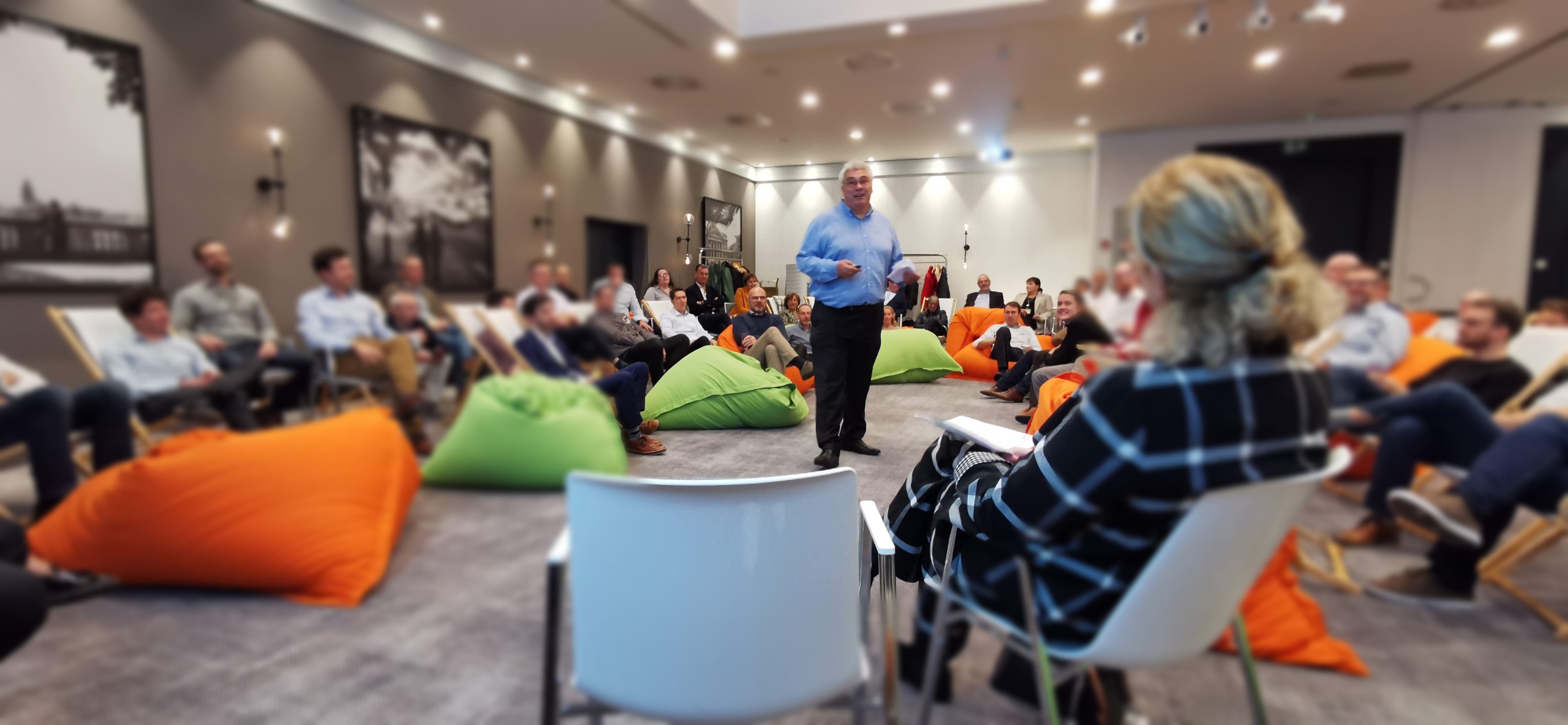
PHILIPPE VAN BELLE
Chief Information &
Technology Officer
The replatforming: a monumental IT revolution
Technological and organisational constraints
Every revolution has its bumps in the road. Our outdated technology and architecture required us to make fundamental compromises. Additionally, our teams had to strain themselves to ensure that the performance and the complex conversions needed to perform the replatforming were up to par.
These technological issues were compounded by coordination challenges. Given the project's complexity, we needed external expertise from Microsoft, Microfocus and HP Enterprises. This collaborative effort required the seamless orchestration of 600 FTEs across five continents and multiple time zones, all working from home during the COVID crisis.
Furthermore, we needed more IT skills. Our team members are all valuable and skilful IT professionals in their domain. However, given the scale of the project, we needed a wider variety of skill sets that we had in store at that time. Finding additional talent and upskilling our existing team members proved more complicated than anticipated.
Finally, we needed to reinforce faith and commitment among our team members. Some team members had legitimate doubts about the feasibility and necessity of the replatforming and were worried about whether it would hamper our ability to service our clients. All these challenges combined made the replatforming a true test of leadership. Here are some of the leadership strategies and tactics we employed to overcome these.
Context is everything
Firstly, we assessed our context and how we navigate it. Contextual awareness paves the way for vision, strategy, innovation, growth and effectiveness. It's a potent jumping-off point that allows organisations to leverage sometimes unforeseen circumstances into transformative opportunities.
The fact that our banking partner could no longer host us on their mainframe gave us the impetus to rethink our entire infrastructure. Coincidently, we noticed that our clients and insurance broker partners rightfully expected faster and more convenient tools and services. These events compelled us to question our organisational identity and desired role within our context.
That thought exercise led to us considering a replatforming, which in turn led to a plethora of technological possibilities that enable us to provide better services to our clients and partners.
Develop a clear, long-term path
We used our context as a guiding force for our vision. Vision is critical. IT is a long-term game that requires leaders to develop plans for today to reach an end goal further down the road. An IT department must tailor its vision to meet the business divisions' needs and align with an organisation's overarching vision. It's equally essential for your team members to know that their efforts serve a bigger purpose. The "Why" drives people.
Our why is clear: we aim to provide our clients and partners with tailor-made and digitised micro-services. The replatforming project is a mission-critical first step. Given the project's magnitude, it was easy for team members to lose track of that. Our management team made a concerted effort to convey that vision transparently.
Transparent communication and storytelling garner trust and commitment

Don't give in to doubt
While we acknowledged and addressed our team members' doubts and concerns, we didn't give in to them. We couldn't have made it through the replatforming if we had allowed doubt to seep through the cracks, even though we had concerns ourselves.
We created plans B and C, but as soon as plan A was set in motion, we never considered changing course. Even when we encountered seemingly insurmountable challenges, we remained steadfast and conveyed our resolve to our teams. We knew that the replatforming and creating the data backbone would propel us to a new technological era.
That doesn't mean we put up a façade; we were open about the challenges and how we felt about them. Revealing your doubts fosters connection and trust with your team members. Vulnerability is the driving force of trust, which generates openness, transparency, creativity and innovation.
Empower your teams and learn to let go
The replatforming taught us that we're less important than we think. We often get carried away when developing a vision and overvalue our role, trying to keep track of every aspect of a project. Not only does far-reaching control stifle creativity, innovation and growth, but it's simply impossible to exert control over every element and rigidly stick to every step of a plan, especially in our field. This became even more apparent during unforeseen events like the COVID crisis.
The pandemic demonstrated that no amount of planning can account for every possibility. While the COVID crisis threw a giant wrench in our process, we showed flexibility and successfully adapted to the situation. That required trust.
Embracing this reality, we trusted our team members' abilities and skills and recognised the importance of earning their trust in return. Actions speak louder than words in that regard. As leaders, we must provide our team members with sufficient resources and instil an empowering culture that fosters high performance, ownership and an intrapreneurial spirit.
Instil a culture of helping

What truthfully sets AG's IT team apart is everyone's desire to help others. Every team member willingly allocated time to make this project work. Without their commitment and selflessness, we wouldn't have made it. Our helping culture fosters transparent communication, co-creation and peer-to-peer learning, leading to new insights and better results.
All our stakeholders within the company adopted this way of working. We're successfully breaking down silos and broadening and deepening how we think and collaborate at AG. Cross-departmental collaboration has become the norm. Our context, and the entire world for that matter, has become too complex for organisations to allow individualistic and siloed work.
Conclusion
The leadership principles we applied boil down to 3 steps:
- First, gauge and internalise the context. To know where you want to go, you need to know where you are and how to get there.
- That leads to the second step, vision. Your vision should be a natural progression from the context you're in, your role, and what you're trying to achieve. A solid vision is built on the existing reality, yourself and the current state of your organisation, with all its opportunities, limitations, weaknesses and strengths.
- Thirdly, communicate with, trust and empower your people. They're the ones who’ll feed your vision with new insights and turn it from wishful thinking to reality. Our job as leaders is to connect the dots, get everyone involved and help our people do what they do best.
These principles are enduring values in an ever-evolving technological landscape. Let's carry these insights forward, using them as a lever to turn complexities into opportunities for innovation and growth.
